 petros
Now
•
50%
petros
Now
•
50%
Yes. Many years ago, I had a hot summer affair with Ayn Rand. Moaning with pleasure, I read "Atlas Shrugged" through (including 181-pages long programmatic monologue of John Galt). When I finished reading, I looked around, and said to myself, "No f... way!"
Historically, that was my turning point towards anarchism.
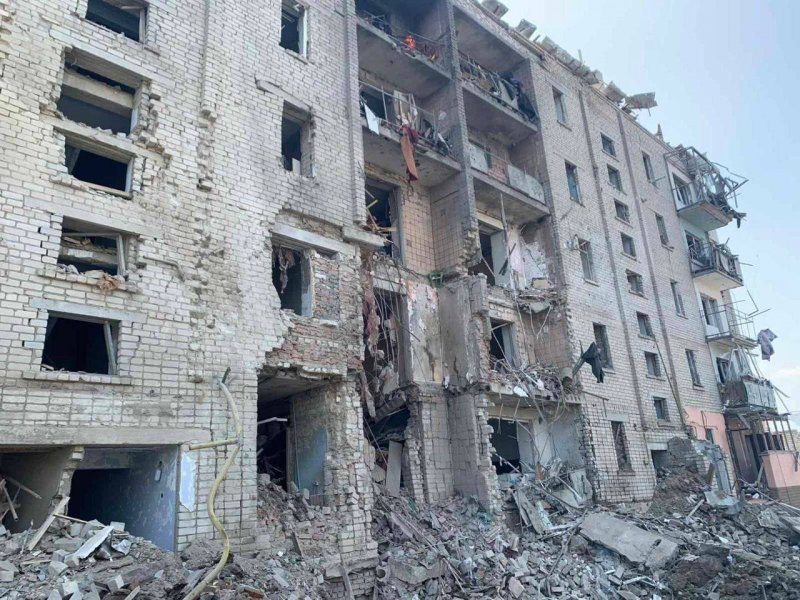 www.osw.waw.pl
www.osw.waw.pl
OSW is focused on analysis of key processes and events that take place in Poland’s broad international surrounding. Our portfolio includes Russia, Caucasus and Central Asia, Central and Eastern Europe, the Baltic Sea Rim (Germany, Scandinavia and Baltic States), as well as China, Turkey and Israel. Our task is to monitor political, social and economic processes, offer both up-to-date and in-depth analyses to our government, as well as participate in debates in expert and academic communities in Poland and abroad. To fulfill this task, there are over forty analysts employed.
 petros
Now
•
23%
petros
Now
•
23%
This is indeed an interesting issue. I was born and raised inside (then) Soviet block, and it is somewhat natural for me to decode the Soviet/Russian propaganda newspeak. I also do translations and write articles in this area for years now. But when I try to answer your question, I see that this text – taken separately from my experience and cultural background – is an example of dog-whistling. This is why "interpreting" it for someone from another bubble is a challenge. The best (if deeply imperfect) non-political analogy is a passive-aggressive attitude. Usually, an outsider cannot understand the tension, caused by seemingly neutral statements. It just needs insider's perspective.
Now, when I started looking into it, I may offer you another way to go. There is a useful model of genocide process, formulated as a checklist of actions. This week is rather busy for me, but I see a need to prepare this checklist, supplemented (where they exist) with examples of Russian actions related to Ukraine. I will get it done within the next two weeks and post an English version here. This is the best I can do, sorry.
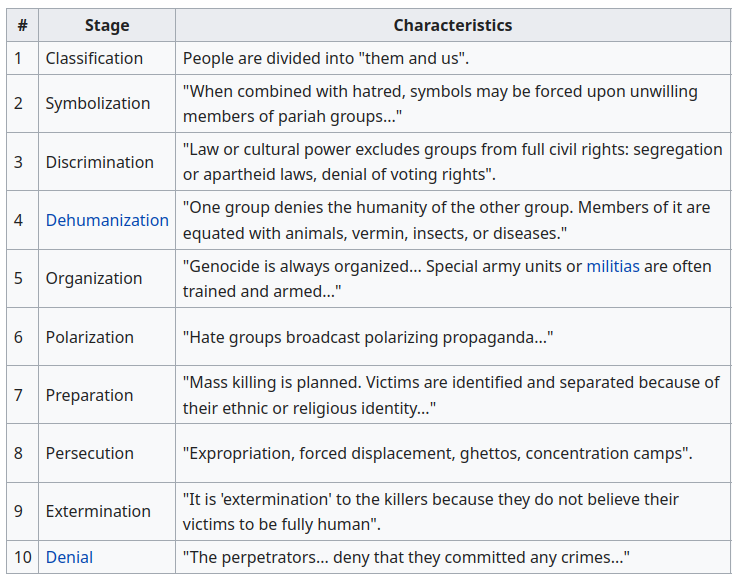
 petros
Now
•
30%
petros
Now
•
30%
Here's an English translation, if Google or Yandex doesn't work for you. https://uacrisis.org/en/justification-of-genocide-russia-has-openly-declared-its-desire-to-exterminate-ukrainians-as-a-nation
As for the interpretation, it is your job, not mine. As you can see in this sub-thread, the same documents can bring various conclusions, depending on the mind, doing interpretation.
 petros
Now
•
29%
petros
Now
•
29%
I answered your question. The document I linked convinced me that Russian Federation has clear intent to wipe out Ukrainians as an ethnic and political entity. 8 months later, an in context of "genocide checklist" (https://en.wikipedia.org/wiki/Ten_stages_of_genocide) compared with Russian actions and propaganda, I am even more convinced.
Mind the fact that I present my perspective and factors that influenced it, not any kind of absolute truth. So feel free to ignore it.
 petros
Now
•
13%
petros
Now
•
13%
Their thinking is theirs, as well. I neither impose my perspective, nor accept other views at a face value. One need to earn my respect and trust first.
 petros
Now
•
21%
petros
Now
•
21%
I still see the same old OP, claiming that https://myrotvorets.center/ is the Ukrainian state's "hitlist". It must be some technical glitch, or perhaps we live in two parallel universes. :-)
 petros
Now
•
25%
petros
Now
•
25%
Your thinking is yours, obviously. I have no problem with it.

 petros
Now
•
25%
petros
Now
•
25%
Mate, the whole OP is about that site. Are you sure you know what thread you are in?

 petros
Now
•
22%
petros
Now
•
22%
State run or not, it is not an official position of the Russian government.
Neither are https://myrotvorets.center/ statements official position of the Ukrainian government.
So, either both or none...
 petros
Now
•
23%
petros
Now
•
23%
I never confront a guy pointing a gun in my direction. ;-) So think whatever you wish to.
 petros
Now
•
30%
petros
Now
•
30%
Just checking if there is any. ;-)
 petros
Now
•
22%
petros
Now
•
22%
Latest version I know, 3rd of April, 2022

cross-posted from: https://lemmy.ml/post/432966 > I am doing "prior art" research to find out what are reliable and open constructions of sensors (and controlling/recording) platforms used in citizen monitoring of environment. > > Due to recent events in Poland, priority topic is river monitoring: > - water temperature, > - pH, > - conductivity, > - dissolved oxygen, > - turbidity, > - ORP (oxidation reduction potential), > - water level (sonar?). > > Also, typical weather station sensors recommendations will be appreciated. > > If you know about an active group dealing with river environment monitoring, please drop a link here – I will be happy to learn from them. > > At this stage, I do not intend to start any deep R&D. I need to learn about good (best!) practices and appropriate hardware, so we can deploy a network of early warning checkpoints as soon and as cheaply as possible.

cross-posted from: https://lemmy.ml/post/432966 > I am doing "prior art" research to find out what are reliable and open constructions of sensors (and controlling/recording) platforms used in citizen monitoring of environment. > > Due to recent events in Poland, priority topic is river monitoring: > - water temperature, > - pH, > - conductivity, > - dissolved oxygen, > - turbidity, > - ORP (oxidation reduction potential), > - water level (sonar?). > > Also, typical weather station sensors recommendations will be appreciated. > > If you know about an active group dealing with river environment monitoring, please drop a link here – I will be happy to learn from them. > > At this stage, I do not intend to start any deep R&D. I need to learn about good (best!) practices and appropriate hardware, so we can deploy a network of early warning checkpoints as soon and as cheaply as possible.

I am doing "prior art" research to find out what are reliable and open constructions of sensors (and controlling/recording) platforms used in citizen monitoring of environment. Due to recent events in Poland, priority topic is river monitoring: - water temperature, - pH, - conductivity, - dissolved oxygen, - turbidity, - ORP (oxidation reduction potential), - water level (sonar?). Also, typical weather station sensors recommendations will be appreciated. If you know about an active group dealing with river environment monitoring, please drop a link here – I will be happy to learn from them. At this stage, I do not intend to start any deep R&D. I need to learn about good (best!) practices and appropriate hardware, so we can deploy a network of early warning checkpoints as soon and as cheaply as possible.

I am now working on some simple pole weapon prototypes. Spearheads and other pointy ends are mounted in an axial groove, fixed with two screws. It gives an advantage, if we need to be able to change configuration. Other than that, we may need a permanent fixture. My idea is to use non-protruding rods and to fill gaps with some kind od resin / glue. It needs to be elastic enough to wthstad vibrations and hits, while rigid enough to transfer force to the shaft. Any suggestions?
 nch.pl
nch.pl
This is my first try to add some spirit of adventure to boring TAILS reality. **My thanks to all people – known and unknown to me – who provided parts and variants of this solution, guidance, and encouragement. No work is done alone.** Attached please find a pack of simple scripts and guidelines how to install #Flatpak and #Signal under Tails. Solution is crude-ish, no integration with Gnome and scripts are spewing some warnings. **So consider it experimental and for fun only!** I plan to add some more apps (Delta Chat and Briar for starters) and also, thanks to your generous feedback, ;-) to improve quality from "daredevil" through "intrepid" and eventually to "boringly routine". I hope you'll like it.

I had a brief encounter regarding geopolitics, which reminded me "Lords and Ladies" and then, through The Scottish Play it brought me to such thought. What do you think?
 The Cosmopolitan Society for the Resistance and Placement of Bakery Workers was founded in Buenos Aires on August 4, 1887, by Italian anarchist labor organizer Ettore Mattei. The statutes for the union were drafted by **Errico Malatesta**, another Italian anarchist. It was the first bakers' union in Argentina, and the country's first society based around the principles of solidarity and resistance; members utilized direct action and the labor strike. August 4, the date of the union's establishment, was declared National Bakers' Day by the National Congress of Argentina in 1957.

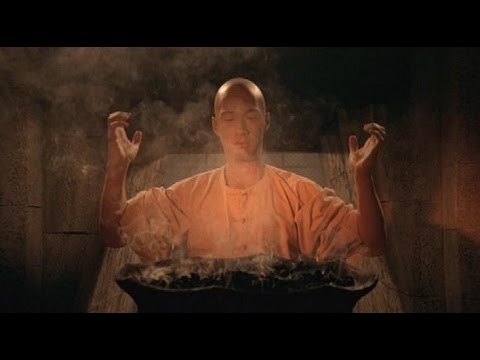 # The [Trolley Problem](https://en.wikipedia.org/wiki/Trolley_problem) is a cyclical (iterative) experiment, showing how a change in the available information can affect the choices made. To increase the emotional factor in the decision-making process, it is dramatized as a scene where a speeding car runs along a track, and the subject of the experiment (the "player") has to decide whether to divert it to one track or the other. 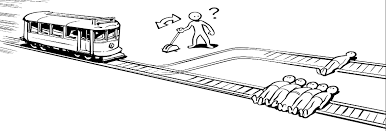 One of the options is technically easier because it only requires doing nothing. Without player interference, things will (khem, khem) take their course anyway. # The Trolley Problem trap is built of three parts: 1. The experiment has an arbitrary number of cycles. In each consecutive cycle, the experimenter (equivalent to the game master "GM" / director) changes the scope and content of the information available to the player, trying to lead them from a situation of simple and obvious choice to a situation in which the choice becomes less and less obvious. 2. The player is also under increasing tension between the emotional aspect (*Track A: the last panda on the planet; Track B: a psychopathic rapist, the future father of the first feminist president of the Earth Nations Federation*) and the implicit expectation that they will solve the dilemma using rational thinking only. In reality, the only goal of the MG is to drive the player to a nervous breakdown due to an unbearable cognitive dilemma. 3. A subtle element of the trap is the time travel aspect. Each cycle (iteration) begins (in the story world – "in-game") at the same point – after a full reset. However, "out-game" the player is aware of previous cycles and the choices made in them. The human mind tends to become attached to its own decisions. The MG tries to push the player to change his or her decisions for less and less obvious reasons, which adds to the discomfort, as the mind wants to see itself as an "integrated" being, not an unstable one. # How to get out of the trap (and use the experience to strengthen self-determination)? This requires developing several important elements of awareness, which boil down to a readiness to make (and fix) mistakes. **1. Acknowledging the information reset.** When I receive new significant information regarding a previously made decision, it is as appropriate as possible to review that decision and possibly change it. I don't get attached to my previous choices, and it doesn't offend me if I back out of them. **2. Accepting the limitations of rational thinking.** Regardless of the completeness of the decision information, I am always ready for the fact that some things cannot be (especially under time pressure) compared rationally. I am ready to make some decisions (after exhausting other sensible ways) randomly or intuitively, and accept the consequences. **3. Accepting that my knowledge and agency are incomplete – always and everywhere.** I will never have full knowledge of the circumstances of my choices. I will never be fully capable – physically, mentally or emotionally – of making and executing every decision imaginable. ------------------------ **To sum up, the trap of the trolley dilemma is to impose unrealistic and contradictory expectations on the player. And getting out of it requires acknowledging one's own limitations and making more direct contact with reality (bypassing even the most magnificent intermediaries).** The plus side is that it doesn't require rearranging a vase full of glowing coals with your bare hands.... 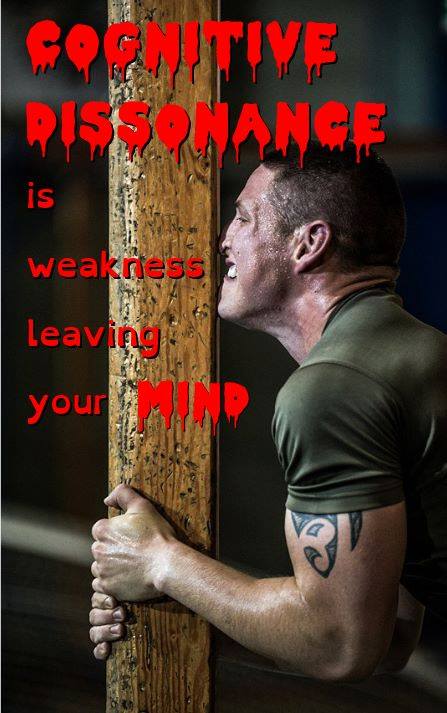

*Morning coffee musings* Transition / Collapse solutions — how to get most out of collapsing infrastructure. During slo-mo catastrophe, more and more infrastructure may become unused, but still technically working. This is what we have now with empty buildings / apartments for example. Or some abandoned industrial facilities taken over by their crews. But there are more technical challenges. If the grid is down, what shall we need to redirect output of a local wind/solar farm to the local community use? How to start running local rail transport? How to salvage content of a logistic centre before it gets marauded? Etc. etc… The inconvenience here lies in the fact that most of such actions are considered illegal *under regular circumstances*. But we will need them when conditions cease to be "regular". I believe we should be able to discuss them under the general category of "civil / civic defense" or "communal resilience". What do you think?

Hi, We just started a [fundraising campaign](https://zrzutka.pl/en/a2gfn6) to buy our first boat, intended as a proof-of-concept for the WartaMAX project. It will be the first boat fully dedicated for Persons With Disabilities (PWDs) here in Poznań (Western Poland). It will also be the beginning of the process to introduce SolarPunk values into local communities across Warta bioregion. See more on slides below. Supporters and interested associates warmly invited! 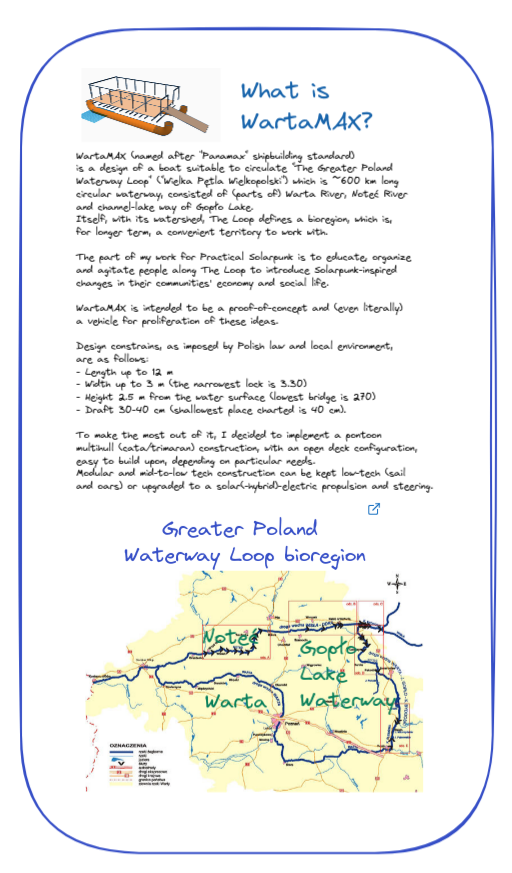 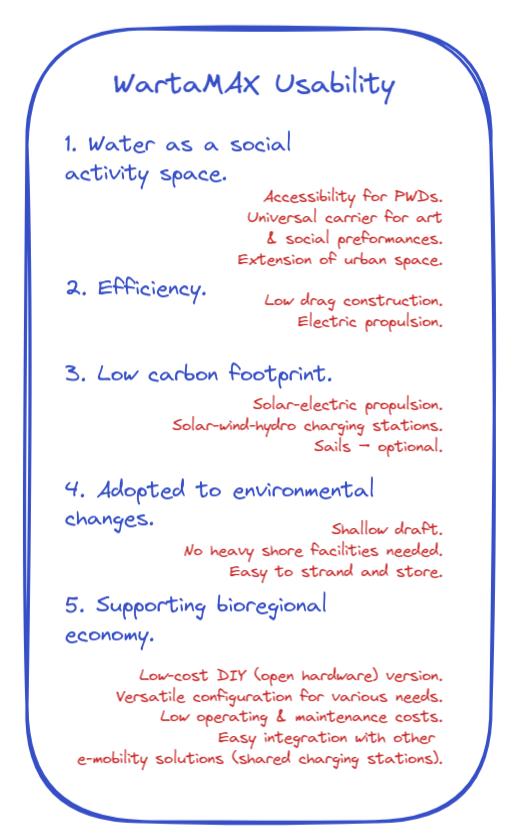  
is there any forum / group or wiki, providing support for Osada users/admins?

I am about to start putting together the DreamDeck -- modular deck, which core module will be built around Raspi CM4. Thus, I am looking for a way to connect essential peripherals (a touchscreen and a camera) directly to CM4, not through I/O board. So far, I only found products that use I/O board as an intermediary. Perhaps someone can point me towards a solution?
I am looking for a nice wiki platform using (or about to start using) federation. My initial search brought http://fed.wiki.org, but it seems to come from a parallel universe...

I am now preparing a proof-of-concept installation for communities who want to monitor trees in their area. The functionality for the first stage of development: 1. Every monitored tree is geotagged, photographed and described. 2. All data are put in a form of indexed (#tags) wiki, linked to a private Openstreetmap overlay, showing localization. 3. The address of the tree page is printed (QR code and human-readable) on a laminated tag, attached to the tree. 4. People, using smartphones, can review information about the tree and provide comments if something happened (i.e. the tree is marked for cutting down) . PoC components I have in mind are simple: -- A wiki system (I am using wiki.js but it can be something else) -- OpenStreetMap with "private" layer -- Yunohost server for localised hosting. If we go deeper and extrapolate, there is much more to it, but for now, I am trying just to open conversation and find out if: 1. There's anybody interested in joining forces and push the concept ahead, with the possibility of making it a standard tool and getting some funding to develop it. 2. There is such or similar system (FOSS, possibly also decentralized / federated) we could build upon. Also all hints are welcome.

We are a collective of four persons, trying to build a translation and publishing cooperative in Poland. As a rule, we aim to publish our works under CC-BY-SA licence, and we do not want to sell them. Thus, we need to find a way to get funding upfront, so we can pay justly for the work of translators and editors. That is what this post is about -- please kindly help us learn more about possible sources of funding, compatible with our venture, across Europe and the rest of the world. We are looking for trusted and ethical crowfunding operators, fiscal sponsors, donors and grantors that would be keen and able to support translation and Polish edition of texts similar to (currently in our pipeline): - [Winterhorn RPG](https://bullypulpitgames.com/games/winterhorn/) (how governments destroy activist groups). - "[Anarchy works](https://theanarchistlibrary.org/library/peter-gelderloos-anarchy-works)" by Peter Gelderloos (a panorama of anarchist and other stateless social models across known history) All constructive hints welcome. ::: spoiler More on "The Black Hole Publishing Collective" We are united by our love of clever and interesting stories about how the world can be built on cooperation, solidarity and the common good. We differ in age, personality, experience, and knowledge. Among us there are experienced translators, seasoned activists and people just entering this world. But we share a common goal: to bring to Polish activist persons the experiences from other places and times. This is why we have formed the Black Hole Publishing Collective, whose name, among other things, refers to the situation we find ourselves in as humanity. Our goal is to translate and publish texts in printed or electronic form (text and sound) — as we choose, but also on demand. We hope to create an “alternative” co-op that will become an official social enterprise. For now, we operate as an alliance of freelancers. :::

cross-posted from: https://lemmy.ml/post/63110 > cross-posted from: https://lemmy.ml/post/63109 > > > cross-posted from: https://lemmy.ml/post/63108 > > > > > We are all in love with decentralized social topology, aren't we. But to make society reasonably decentralized, we need to remodel more than one level of it. I would like to bounce around some thoughts that may help establish a multilayer model of decentralized society. > > > > > > ::: Longwinded > > > 1. Assumptions. > > > > > > 1.1. I use communications as an example of social activity that is a key to all other processes. > > > > > > 1.2. I assume that a decentralized network of heterogeneous communities is a good model for human society that we need now, as the all-crisis unfolds and neither democracy nor (even less) capitalism can offer any constructive approach. > > > > > > 1.3. I assume that the **minimal** provisions for an individual must include the right to participate in more than one community at the same time, the right to opt-out peacefully at any moment and the right to form a community (and participate in the network) on an equal basis. > > > > > > 2. Layers > > > > > > 2.1. "Fediverse". > > > What we now see as fediverse is an implementation of communications pattern, where instances of various services can be associated with specific communities and their local users considered community members. Federation protocol provides a routine way to regulate interactions with other communities. > > > > > > 2.2. "Community Intranet". > > > To control their collective memory, their policies/rituals and their boundaries, communities need to have control over the physical infrastructure of their "village intranet". It applies mostly to "natural" (local) communities, while "virtual" ones may need a trusted and neutral virtual hosting environment. The control should not, however, influence individual participation in remote communities. > > > > > > 2.3. "NetCommons". > > > To keep the information flowing, society needs a non-owned, collectively managed transmission backbone. We can draw analogies with watershed management that is a known example of advantages and shortages of the commons approach. > > > > > > 2.4. "Platform Cooperatives". > > > Economic (and, effectively, political) control of the means of production is a key to stability of the ecosystem. Thus, decentralized ecosystem of user cooperatives provides cohesion to the whole multilayered model. Every user becomes a member of the co-op(s) operating their community(ies) infrastructure. Community co-ops then form the "NetCoooperative", managing and maintaining the backbone systems and providing support, R&D and exception handling to communities in need. > > > > > > 3. Essential question is, whether such a model is comprehensive and complete enough to provide scaffolding for an attempt to implement proof-of-concept project. > > > > > > Questions and comments welcome. > > > > > > ::: > > >

cross-posted from: https://lemmy.ml/post/63109 > cross-posted from: https://lemmy.ml/post/63108 > > > We are all in love with decentralized social topology, aren't we. But to make society reasonably decentralized, we need to remodel more than one level of it. I would like to bounce around some thoughts that may help establish a multilayer model of decentralized society. > > > > ::: Longwinded > > 1. Assumptions. > > > > 1.1. I use communications as an example of social activity that is a key to all other processes. > > > > 1.2. I assume that a decentralized network of heterogeneous communities is a good model for human society that we need now, as the all-crisis unfolds and neither democracy nor (even less) capitalism can offer any constructive approach. > > > > 1.3. I assume that the **minimal** provisions for an individual must include the right to participate in more than one community at the same time, the right to opt-out peacefully at any moment and the right to form a community (and participate in the network) on an equal basis. > > > > 2. Layers > > > > 2.1. "Fediverse". > > What we now see as fediverse is an implementation of communications pattern, where instances of various services can be associated with specific communities and their local users considered community members. Federation protocol provides a routine way to regulate interactions with other communities. > > > > 2.2. "Community Intranet". > > To control their collective memory, their policies/rituals and their boundaries, communities need to have control over the physical infrastructure of their "village intranet". It applies mostly to "natural" (local) communities, while "virtual" ones may need a trusted and neutral virtual hosting environment. The control should not, however, influence individual participation in remote communities. > > > > 2.3. "NetCommons". > > To keep the information flowing, society needs a non-owned, collectively managed transmission backbone. We can draw analogies with watershed management that is a known example of advantages and shortages of the commons approach. > > > > 2.4. "Platform Cooperatives". > > Economic (and, effectively, political) control of the means of production is a key to stability of the ecosystem. Thus, decentralized ecosystem of user cooperatives provides cohesion to the whole multilayered model. Every user becomes a member of the co-op(s) operating their community(ies) infrastructure. Community co-ops then form the "NetCoooperative", managing and maintaining the backbone systems and providing support, R&D and exception handling to communities in need. > > > > 3. Essential question is, whether such a model is comprehensive and complete enough to provide scaffolding for an attempt to implement proof-of-concept project. > > > > Questions and comments welcome. > > > > ::: > >

cross-posted from: https://lemmy.ml/post/63108 > We are all in love with decentralized social topology, aren't we. But to make society reasonably decentralized, we need to remodel more than one level of it. I would like to bounce around some thoughts that may help establish a multilayer model of decentralized society. > > ::: Longwinded > 1. Assumptions. > > 1.1. I use communications as an example of social activity that is a key to all other processes. > > 1.2. I assume that a decentralized network of heterogeneous communities is a good model for human society that we need now, as the all-crisis unfolds and neither democracy nor (even less) capitalism can offer any constructive approach. > > 1.3. I assume that the **minimal** provisions for an individual must include the right to participate in more than one community at the same time, the right to opt-out peacefully at any moment and the right to form a community (and participate in the network) on an equal basis. > > 2. Layers > > 2.1. "Fediverse". > What we now see as fediverse is an implementation of communications pattern, where instances of various services can be associated with specific communities and their local users considered community members. Federation protocol provides a routine way to regulate interactions with other communities. > > 2.2. "Community Intranet". > To control their collective memory, their policies/rituals and their boundaries, communities need to have control over the physical infrastructure of their "village intranet". It applies mostly to "natural" (local) communities, while "virtual" ones may need a trusted and neutral virtual hosting environment. The control should not, however, influence individual participation in remote communities. > > 2.3. "NetCommons". > To keep the information flowing, society needs a non-owned, collectively managed transmission backbone. We can draw analogies with watershed management that is a known example of advantages and shortages of the commons approach. > > 2.4. "Platform Cooperatives". > Economic (and, effectively, political) control of the means of production is a key to stability of the ecosystem. Thus, decentralized ecosystem of user cooperatives provides cohesion to the whole multilayered model. Every user becomes a member of the co-op(s) operating their community(ies) infrastructure. Community co-ops then form the "NetCoooperative", managing and maintaining the backbone systems and providing support, R&D and exception handling to communities in need. > > 3. Essential question is, whether such a model is comprehensive and complete enough to provide scaffolding for an attempt to implement proof-of-concept project. > > Questions and comments welcome. > > ::: >
 Now
Now
8Petros (he/him)
petros@ lemmy.mlPostproletarian transanarchist kolapsnik.
- I am not here for validation. :-)
- My perspective is just a perspective – feel free to ignore it.
- I am nice because I chose so – not because I must.
- Civil conversation is fine. But it's your choice.

